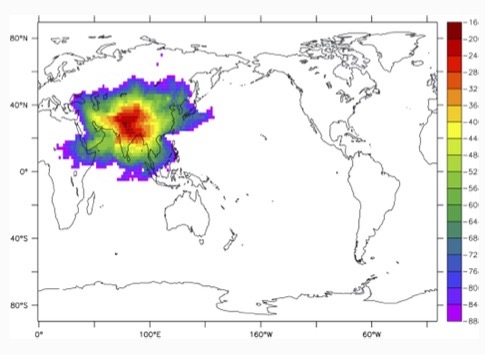Mega city emissions from South-East Asia

There has been a growing concern about air pollutions from mega cities across the globe. Even though they cover roughly 2% of the earth’s surface, they are major emitters of greenhouse gases. In fact, 70% of global anthropogenic carbon dioxide emissions come from these cities. Several locations of South-East Asia have already been identified as the principal emitter of greenhouse gases due to their rapid population and economic growth rates. While immediate action is required to curtail these increasing pollutant levels in order to prevent the adverse effects on human health and climate change, issues remain in quantifying and tracking these emitters as measurements are often unavailable or otherwise confined to ground-based sensors at specific locations, which severely restrict the observation over wider regions where the tracers are often transported due to atmospheric dynamics. To overcome this issue, a global climate model EMAC is used in this work along with ground and upper air measurements from different aircraft campaigns during the monsoon period of 2013, when strong vertical convection is found to carry large amounts of pollutants to the upper atmosphere. A network of 12 Asian mega cities is considered. Major questions that have been addressed in this work are:
- evaluating the fraction of total emission that travels and pollutes other locations at certain distances
- identifying the potential of dry and wet deposition processes in ‘cleaning’ the atmosphere
- estimating the tracer lifetime and aerosol size in pollutant distributions under different atmospheric conditions
This study has been executed using 10 artificial radioactive gaseous tracers with varying lifetimes. For aerosol particles, 5 different bin sizes were chosen (0.1, 0.5, 1.0, 2.5, 10.0 μm in diameter) with different solubilities. For aerosols, both dry (sedimentation + surface roughness) and wet (nucleation + scavenging) depositions were considered. The results quantitatively confirm that sparingly soluble smaller particles are less prone to gravitational settlings and tend to build up over time. In future, more sensors are planned to be deployed near the power plants and the model can be better tuned to further improve the tracer distributions over different regions.